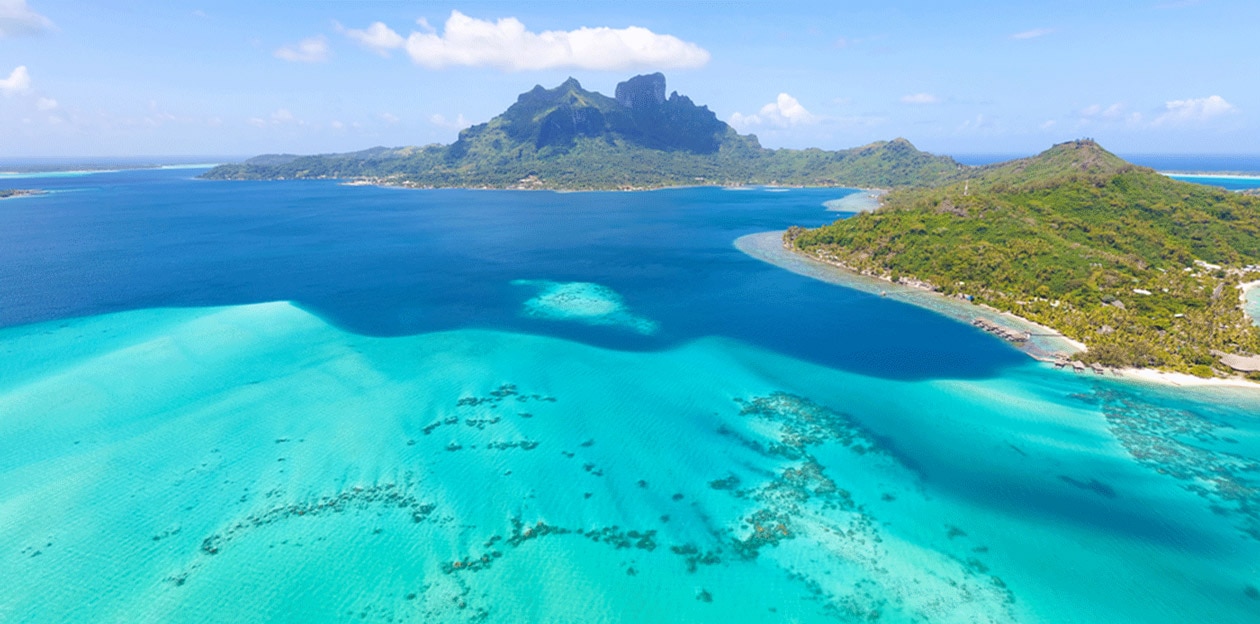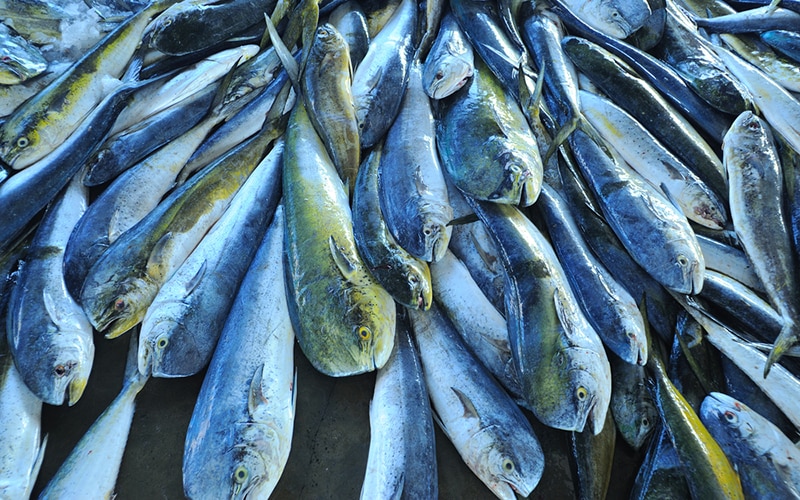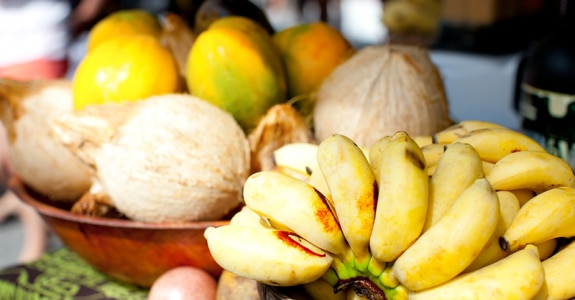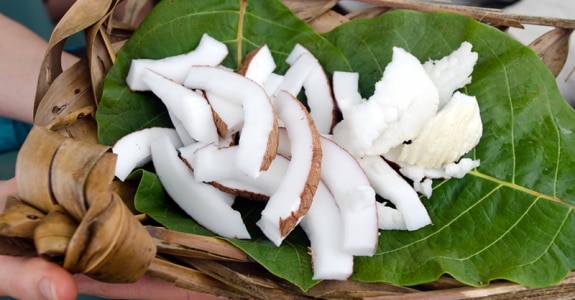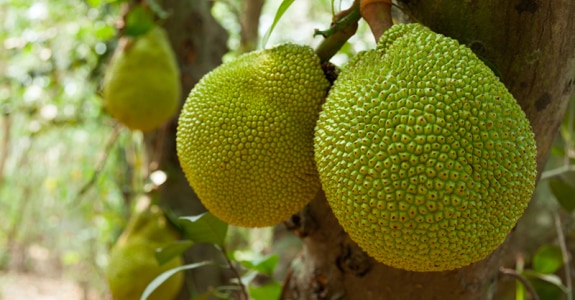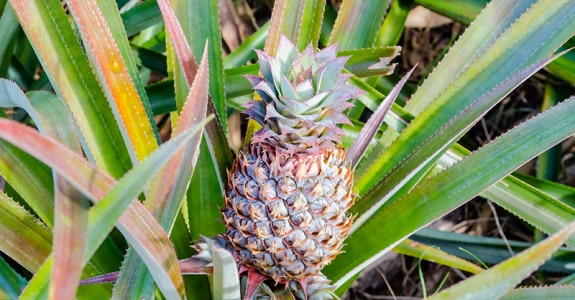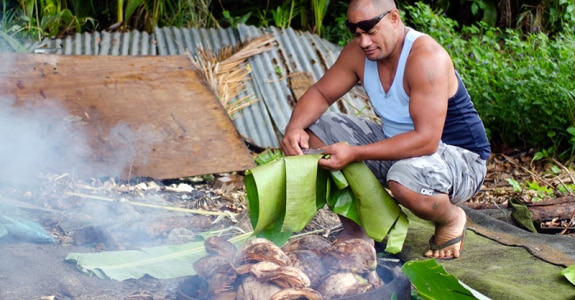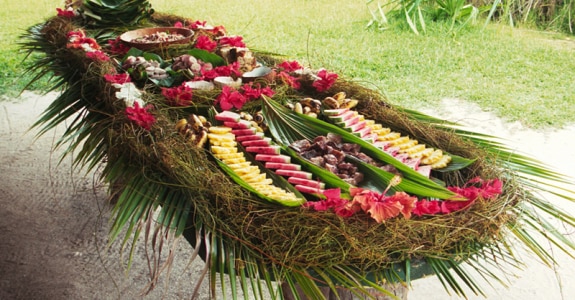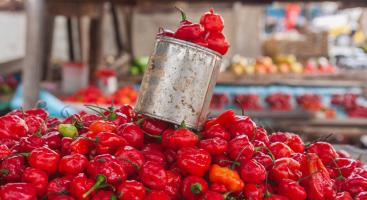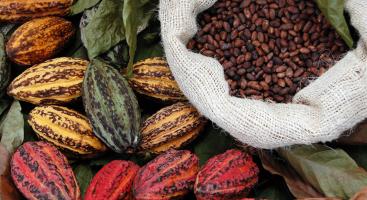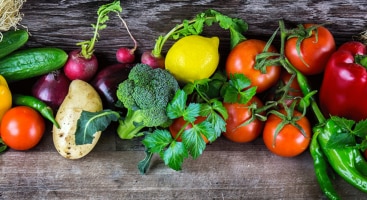Polynesian cuisine
A string of islands in the Pacific Ocean, with their blue lagoons and fine sandy beaches under palm trees, the Polynesian islands offer a South Sea paradise. Their name comes from Greek and means "many islands", one of the three regions that make up Oceania and include the Samoa Islands, Tonga and French Polynesia and thus Tahiti and Bora-Bora.
Polynesian cuisine offers a wide variety of specialities, mostly based on seafood and exotic fruit, with French and Chinese influences. Dishes tend to use relatively few spices and often include coconut milk, ginger, lime, vanilla or tamarind. Fish and shellfish are prepared in numerous ways: grilled, on skewers, wrapped and baked or deep fried, raw, etc. Among the ocean fish, the most popular species are tuna, mahi-mahi (coryphaena), appreciated for its delicate flavour, opah (or moonfish) and swordfish. The lagoons also offer an incredible variety of fish that are used in traditional cuisine such as parrotfish, scad and red mullet.
Tropical fruit and vegetables
The hot and humid tropical climate is particularly well-suited to growing fruit and vegetables. Taro is widely grown in Polynesia, for both the tuber and the leaves; there is also fafa (tropical spinach), cassava, sweet potato and numerous varieties of fruit, such as uru (breadfruit), which, when cooked, looks similar to bread.
Fresh fruit is often served as dessert, but is also used in salads, fish tartares and cooked dishes. Among the most common are pineapple, which grows on the ground; mango, known as the ‘peach of the tropics’ and papaya, which can be eaten ripe or green, in a salad.
One of the fruits most associated with the islands is, of course, the coconut. The trunk of the coconut palm, known as the ‘tree of life’, is used as a building material, while the fruit is consumed in all its forms. It is wrapped with a thick layer of fibres, under which a thin brown shell encases sparkling white flesh. When coconuts are young, part of the inside is liquid; this is coconut water. Then, as the fruit ripens, it becomes solid. Coconut milk is used in numerous culinary preparations and is made by pressing grated coconut flesh.
The Polynesian oven, a traditional cooking technique
During festive occasions, food is still cooked in earth ovens or cooking pits, according to a traditional procedure that dates back to ancient times. This consists in digging a hole about a metre deep, with the surface area varying according to the quantity of food to be cooked. Dry wood is placed on the bottom and covered with volcanic stones. The wood is burnt to heat the stones, then the food (wild pig, fish, taro, cassava, uru, etc.) is wrapped in banana leaves and placed on the stones to cook. The food is covered with more hot stones and then with earth and sand, to create a steaming/braising effect. The oven is then watched constantly and, if any smoke appears through a hole, it has to be blocked. A meal generally takes a few hours to prepare using this traditional method.
Tama’a Maitai! Enjoy your meal!



